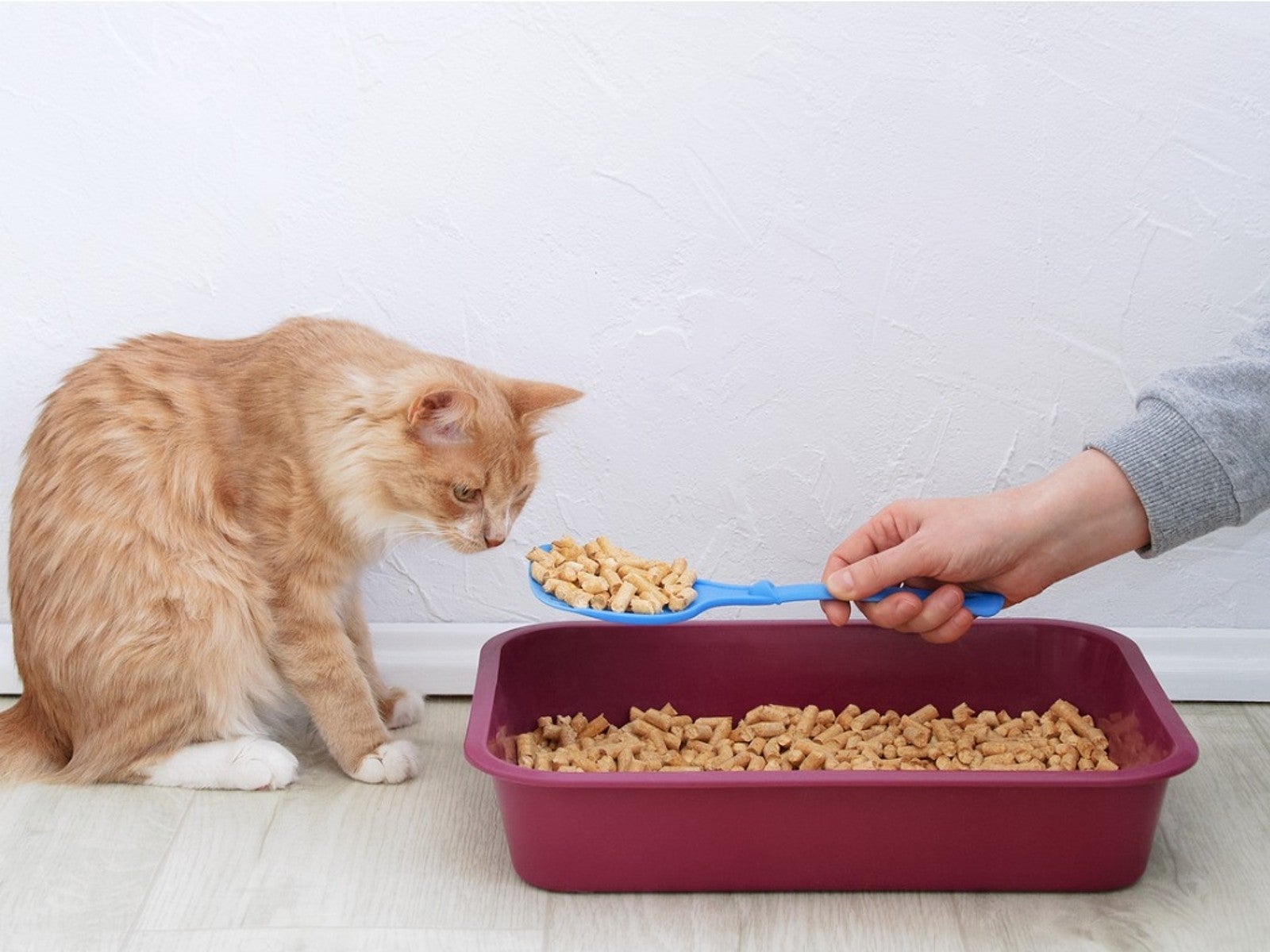Should You Actually Compost Compostable Cat Litter?


It's not unusual for cat owners to have concerns about the impact cat litter has on the environment. Which leaves many to question, “is cat litter compostable?” The idea of turning this waste material into a usable garden amendment has a certain appeal. However, unlike grass clippings, autumn leaves, and kitchen scraps, there are a number of issues that complicate the process of composting cat litter.
Is It Safe to Compost Cat Litter?
Safety is the primary concern when composting cat litter. While gardeners often add manure from farm animals like cows and chickens to their compost piles, fecal material from carnivores such as dogs and cats contain a host of pathogens that can be harmful to humans. Here are four zoonotic pathogens that can be present in cat feces:
- Campylobobacter – These gram-negative bacteria can cause diarrhea in humans. Infection is usually transmitted through contaminated food.
- Cryptosporidium – This microscopic parasite also causes diarrhea in humans and can be spread from person to person.
- Salmonella – Fever, headache, muscle aches, vomiting, and diarrhea are the most common symptoms caused by this gram-negative bacterium. Transmission to humans most often occurs from food contaminated by raw chicken or fecal material.
- Toxoplasma gondii – Particularly dangerous for pregnant women, this parasitic protozoan can cause birth defects. It can be transmitted when cleaning the cat box or working in contaminated soil.
Due to the presence of these pathogens, experts agree it is not safe to use compost containing cat feces or litter on plants intended for human consumption. This includes vegetable garden and fruit plants as well as fruit and nut-bearing trees and shrubs.
Can You Compost Cat Litter for Ornamental Plants?
While it is possible to use compost containing cat litter on ornamental plants, it should be noted that all four of the above pathogens can live in soil for extended periods of time. Naturally, activities such as weeding or planting annual flowers expose gardeners to the soil.
To kill cat-litter pathogens in compost and make it safe for use on ornamentals, the compost pile must create sufficient heat and sustain that heat for several days. Herein lies the problem with composting cat litter.
Some sources indicate the above pathogens can be killed by exposure to temperatures above 145 degrees F. (63 C.) for three or four days. Others cite 150 to 160 degrees F. (66-71 C.) as the target temperature. Unfortunately, temperatures above 160 degrees F. (71 C.) will also kill the beneficial microbes in the compost pile.
To maintain a compost pile at the temperature needed to kill pathogens, it's essential to monitor the temperature of the pile using a long probe thermometer. When the temperature reaches 160 degrees F. (71 C.), the pile needs turned to control the temperature and add the oxygen needed for aerobic decomposition.
Sign up for the Gardening Know How newsletter today and receive a free copy of our e-book "How to Grow Delicious Tomatoes".
Is Cat Litter Biodegradable?
Safety concerns aside, biodegradability is another issue cat owners face when composting cat litter. Most of the cat litter sold in the United States is clay-based. It should not be put in compost piles as both clumping and non-clumping types of clay litter won't break down.
For cat owners with the dedication and desire to compost cat waste materials, there are commercial litters designed to be biodegradable. These products are usually made from one of the following materials:
- Wood
- Corn
- Paper
- Nut Shells
- Wheat
- Coconut Hulls
Here are some additional tips for making kitty litter compost:
- Research local ordinances for composting regulations. These may include how far from residential buildings a compost pile must be located.
- Choose the composting site carefully. Leaching and runoff from compost piles can contaminate nearby water sources.
- Add nitrogen to the compost pile, if needed, to ensure the proper balance of browns and greens.
- Use a thermometer and turn the pile as needed to add oxygen and maintain the proper temperature to kill pathogens.
- Consider composting cat waste in an in-ground system, much like a septic tank. Be sure not to install this system near a drinking-water well.

Laura Miller has been gardening all her life. Holding a degree in Biology, Nutrition, and Agriculture, Laura's area of expertise is vegetables, herbs, and all things edible. She lives in Ohio.